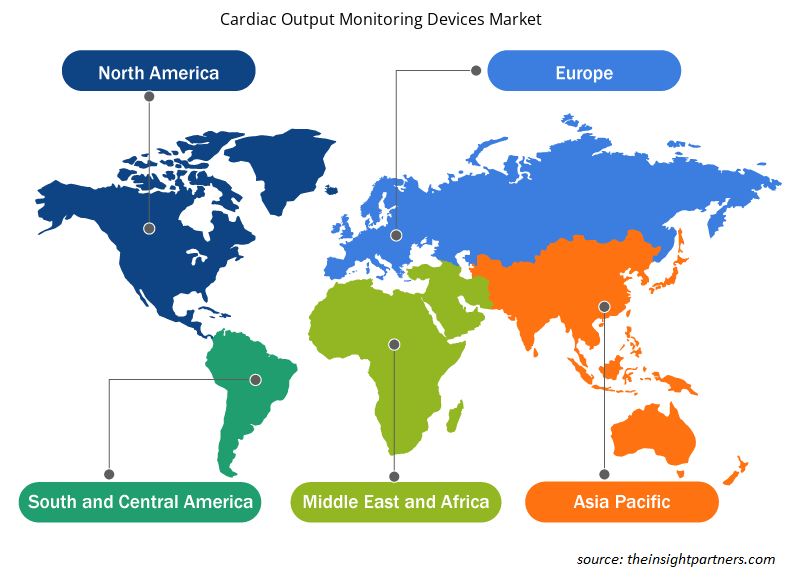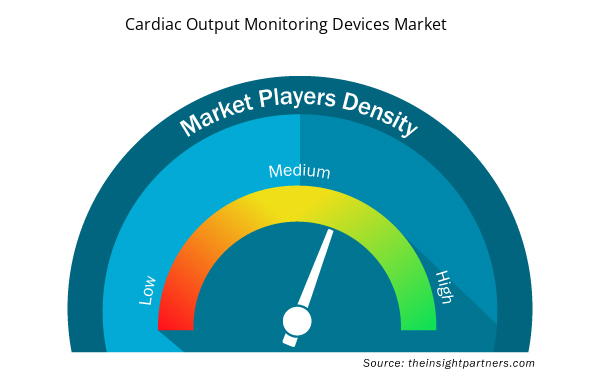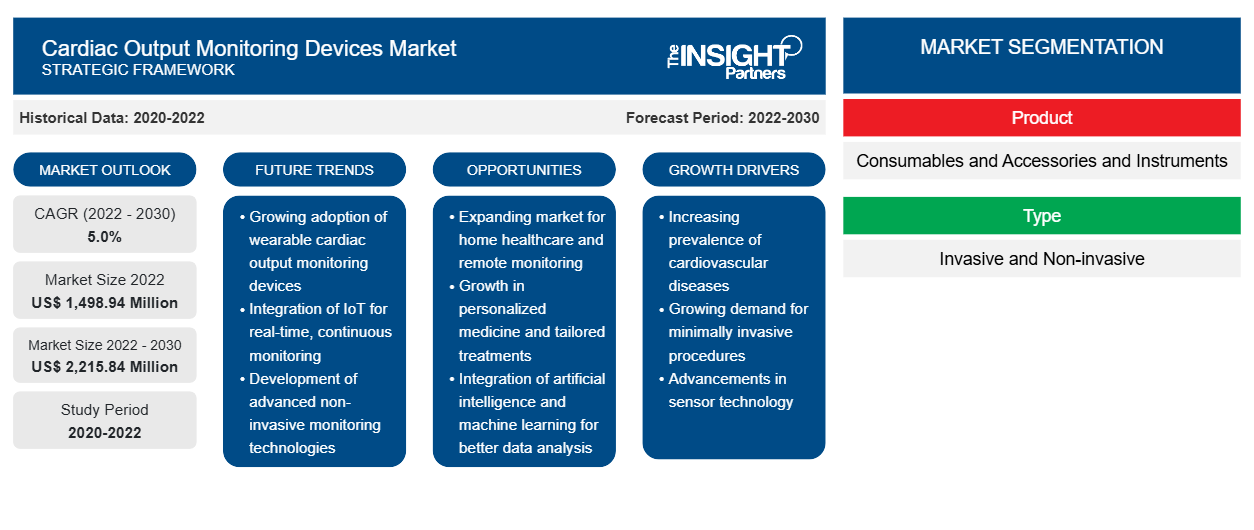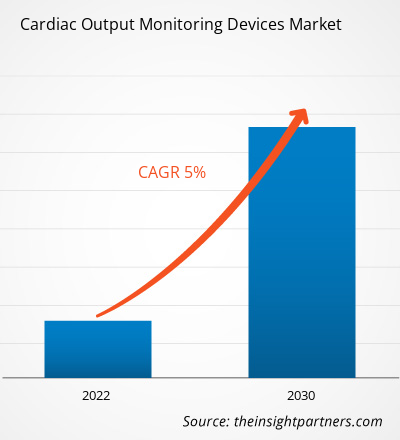[研究报告] 心输出量监测设备市场规模预计将从 2022 年的 14.9894 亿美元增长到 2030 年的 22.1584 亿美元;预计 2022 年至 2030 年市场复合年增长率为 5.0%。
市场洞察和分析师观点:
心脏左心室或右心室每分钟泵出的血液量称为心输出量。它依赖于每搏输出量和心率。生物阻抗、脉搏轮廓分析、热稀释、FloTrac 监测、PiCCO 心输出量监测、多普勒和菲克斯原理是心输出量监测技术的基础。使用心输出量监测设备是评估手术室、重症监护室和其他环境中患者的重要部分。得益于技术发展,锂稀释方法使持续实时心输出量 (CO) 监测成为可能。在预测期内,预计心输出量监测设备市场将因该技术而呈指数级增长。
增长动力和挑战:
心血管疾病 (CVD) 和其他需要持续监测和重症监护的重大健康问题在老年人中越来越常见。CVD 的一些主要风险因素包括年龄、种族和家族史。吸烟、高血压、高胆固醇、肥胖、缺乏运动、糖尿病、不良饮食和饮酒是其他风险因素。
因此,在估计期间,预计世界人口老龄化将推动心输出量监测设备市场的发展。根据世界卫生组织 (WHO) 的预测,到 2030 年,全世界将有 14 亿 60 岁以上的人。随着年龄的增长,人们更容易受到行动不便的影响,因此他们需要医疗援助或帮助以避免依赖其他人。全球人口正在迅速老龄化,预计未来几年老年人的数量将大幅增加。根据 2020 年人口普查,在美国,65 岁及以上人口的增长速度几乎是 1920-2020 年总体人口增长速度的五倍。2020 年,5580 万美国人,即总人口的 16.8%,年龄在 65 岁及以上。此外,巴西 13% 的人口(超过 3000 万老年人)年龄在 60 岁以上;预计到 2030 年,这一人口将达到约 5000 万,占该国总人口的 24%。因此,日益增加的易患心血管疾病的老年人口是推动心输出量监测设备市场增长的重要因素。
另一方面,患者和医疗保健专业人员特别担心设备中的网络安全漏洞,尤其是计算机图像提取设备 (CIED) 之类的设备,这些设备有可能被重新编程或无法使用。美国食品药品监督管理局 (FDA) 于 2023 年表示,美敦力公司正在召回约 350,000 台植入式心脏设备,因为它们在需要时提供高压治疗的能力存在持续问题。
FDA 网站上的一份咨询报告指出,“低能量电击或根本不电击可能无法纠正危及生命的心律失常,这可能导致心脏骤停、其他严重伤害或死亡。”“如果患者需要进行额外的手术来移除和更换该设备,则存在额外的伤害风险。” 2017 年之后生产的所有带有玻璃馈通的心脏再同步治疗除颤器 (CRT-D) 和植入式心脏复律除颤器 (ICD) 均在此次召回范围内。FDA 表示,使用这些设备“可能会导致严重伤害或死亡”,FDA 将此归类为 I 级召回。因此,所有这些因素都阻碍了市场增长。
定制此报告以满足您的需求
您可以免费定制任何报告,包括本报告的部分内容、国家级分析、Excel 数据包,以及为初创企业和大学提供优惠和折扣
- 获取此报告的关键市场趋势。这个免费样品将包括数据分析,从市场趋势到估计和预测。
报告细分和范围:
心输出量监测设备市场根据产品、类型和最终用户进行细分。根据产品,市场分为消耗品、配件和仪器。根据类型,心输出量监测设备市场分为侵入式和非侵入式。根据最终用户,心输出量监测设备市场分为医院、门诊手术中心和其他。根据地理位置,心输出量监测设备市场分为北美(美国、加拿大和墨西哥)、欧洲(英国、德国、法国、意大利、西班牙和欧洲其他地区)、亚太地区(中国、日本、印度、韩国、澳大利亚和亚太地区其他地区)、中东和非洲(阿联酋、沙特阿拉伯、南非和中东和非洲其他地区)以及南美洲和中美洲(巴西、阿根廷和南美洲和中美洲其他地区)。
节段分析:
就收入而言,耗材和配件类别在 2022 年占据了全球市场的最大份额。由于耗材需求增加和心脏病发病率上升,预计该类别将在全球市场占据主导地位。制造商将设备出租给最终用户,最终用户随后在其设施中安装心输出量监测设备。协议规定,为了让最终客户使用这些设备,他们必须购买一次性用品。因此,在整个预测期内,心输出量监测设备的安装基数可能会增加,全球心血管疾病的患病率也会上升。
心输出量监测设备市场根据类型分为侵入式和非侵入式两类。由于其准确且一致的结果(这在重症监护环境中至关重要),侵入式类别在 2022 年占据了相当大的市场份额。手术室和重症监护室经常使用侵入式设备来测量患有严重心脏和肺部疾病的患者的心输出量。这些设备通过动脉或静脉插入患者体内,可直接评估心输出量。心力衰竭、心脏骤停和肺栓塞等心血管疾病的患病率不断上升,预计将在预测期内推动对侵入式心输出量监测设备的需求。
从最终用户角度来看,医院部门在 2022 年占据了心输出量监测设备市场的主导地位,因为需要心脏监测的患者数量众多,而且拥有最先进的医疗基础设施和医务人员。医院配备了现代化的监测设备,可以持续监测有心脏问题的患者。使用这些技术可以改善患者的治疗效果、及时干预和早期发现心脏问题。此外,对微创手术的需求不断增长,心血管疾病的发病率不断上升,预计将推动医院心输出量监测设备市场的增长。
区域分析:
根据地域划分,心输出量监测设备市场主要分为北美、欧洲、亚太地区、中东和非洲以及南美和中美洲。北美是全球市场增长的最大贡献者。就全球心输出量监测设备市场而言,北美在 2021 年占据了最大份额。这可以归因于心血管疾病患病率的上升、医疗保健成本的增加、可支配收入的增加、健康意识的增强以及该地区尖端医疗技术的易得性。根据人口参考局的数据,美国老年人口预计将从 2018 年的 5200 万增加到 2060 年的 9500 万。与 2018 年的 16% 相比,预计到 2060 年老年人口将占美国总人口的 23%。
预计从 2022 年到 2030 年,亚太地区的心输出量监测设备市场将实现最高的复合年增长率。该地区市场的增长归因于中国、印度、日本和韩国等国家对研发活动的投资不断增加,这些国家正在成为重要的制药和生物技术中心。此外,拥有大量熟练的研究人员和科学家,以及与西方国家相比较低的运营成本,使亚太地区成为医疗旅游的热门目的地。心血管疾病的患病率不断上升,以及对创新药物的需求以满足未满足的医疗需求,正在创造对新设备的需求,从而有利于该地区心输出量监测设备市场的增长。
心输出量监测设备市场区域洞察
Insight Partners 的分析师已详尽解释了预测期内影响心输出量监测设备市场的区域趋势和因素。本节还讨论了北美、欧洲、亚太地区、中东和非洲以及南美和中美洲的心输出量监测设备市场细分和地理位置。

- 获取心输出量监测设备市场的区域特定数据
心输出量监测设备市场报告范围
| 报告属性 | 细节 |
|---|---|
| 2022 年市场规模 | 14.9894亿美元 |
| 2030 年市场规模 | 22.1584亿美元 |
| 全球复合年增长率(2022 - 2030 年) | 5.0% |
| 史料 | 2020-2022 |
| 预测期 | 2022-2030 |
| 涵盖的领域 | 按产品
|
| 覆盖地区和国家 | 北美
|
| 市场领导者和主要公司简介 |
|
市场参与者密度:了解其对商业动态的影响
心输出量监测设备市场正在快速增长,这得益于终端用户需求的不断增长,而这些需求又源于消费者偏好的不断变化、技术进步以及对产品优势的认识不断提高等因素。随着需求的增加,企业正在扩大其产品范围,进行创新以满足消费者的需求,并利用新兴趋势,从而进一步推动市场增长。
市场参与者密度是指在特定市场或行业内运营的企业或公司的分布情况。它表明在给定市场空间中,相对于其规模或总市场价值,有多少竞争对手(市场参与者)存在。
在心输出量监测设备市场运营的主要公司有:
- 洁定公司
- 通用电气医疗
- 百特国际公司
- 爱德华生命科学公司
- 奥西普卡医疗有限公司
免责声明:上面列出的公司没有按照任何特定顺序排列。

- 获取心输出量监测设备市场顶级关键参与者概览
竞争格局和重点公司:
Getinge AB、GE Healthcare、Baxter International Inc.、Edward Lifesciences Corporation、Osypka Medical GmbH、LiDCO Group plc、Deltex Medical Group plc、ICU Medical, Inc.、Uscom 和 CNSystems Medizintechnik GmbH 是心输出量监测设备市场上的几家知名企业。这些公司专注于扩大服务范围,以满足全球日益增长的消费者需求。它们的全球业务使它们能够为大量客户提供服务,从而扩大其市场份额。
- 历史分析(2 年)、基准年、预测(7 年)及复合年增长率
- PEST 和 SWOT 分析
- 市场规模价值/数量 - 全球、区域、国家
- 行业和竞争格局
- Excel 数据集


- Pipe Relining Market
- Emergency Department Information System (EDIS) Market
- Data Center Cooling Market
- Webbing Market
- Aircraft Wire and Cable Market
- Hydrogen Compressors Market
- Legal Case Management Software Market
- Nitrogenous Fertilizer Market
- Sterilization Services Market
- Small Molecule Drug Discovery Market

Report Coverage
Revenue forecast, Company Analysis, Industry landscape, Growth factors, and Trends

Segment Covered
This text is related
to segments covered.

Regional Scope
North America, Europe, Asia Pacific, Middle East & Africa, South & Central America

Country Scope
This text is related
to country scope.
常见问题
The market for cardiac output monitoring devices has been split into invasive and non-invasive categories based on type. Owing to its accurate and consistent outcomes, which are crucial in critical care environments, the invasive category held a significant market share in 2022. Surgical rooms and critical care units frequently use invasive devices to measure cardiac output in patients with serious cardiac and pulmonary issues. These devices, which are inserted into the patient's body through an artery or vein, allow for the direct assessment of cardiac output. The growing prevalence of cardiovascular diseases, such as heart failure, cardiac arrest, and pulmonary embolism, is expected to drive demand for invasive cardiac output monitoring devices during the forecast period.
The cardiac output monitoring devices market is expected to be valued at US$ 2,215.84 million in 2030.
On the basis of end user, the hospital segment dominated the cardiac output monitoring devices market in 2022 because of the large number of patients requiring cardiac monitoring, the availability of state-of-the-art healthcare infrastructure, and the availability of medical personnel. Hospitals are equipped with modern monitoring equipment that allows for continuous monitoring of patients with cardiac issues. Improved patient outcomes, timely intervention, and early detection of cardiac issues are made possible by the use of these techniques. Additionally, the growing requirement for less invasive procedures and the increasing frequency of cardiovascular illnesses are expected to drive growth in the market for cardiac output monitoring devices in hospitals.
The cardiac output monitoring devices market has major market players, including Getinge AB, GE Healthcare, Baxter International Inc., Edward Lifesciences Corporation, Osypka Medical GmbH, LiDCO Group plc, Deltex Medical Group plc, ICU Medical, Inc., Uscom, and CNSystems Medizintechnik GmbH.
In terms of revenue, the consumables and accessories category accounted for the largest share of the global market in 2022. Because of the increased demand for consumables and the rising frequency of cardiac disorders, it is expected that this category will dominate the global market. Manufacturers rent equipment to end users, who then install cardiac output monitoring devices at their facilities. The agreement states that in order for end customers to utilize these devices, they must buy disposables. As a result, throughout the projected period, there will probably be an increase in the installation base of cardiac output monitoring devices and a rise in the prevalence of cardiovascular disorders worldwide.
The cardiac output monitoring devices market was valued at US$ 1,498.94 million in 2022.
The amount of blood pumped by the heart's left or right ventricle in a minute is known as cardiac output. It is reliant on both stroke volume and heart rate. Bioimpedance, pulse contour analysis, thermodilution, FloTrac monitoring, PiCCO cardiac output monitoring, Doppler, and the Ficks principle are the foundations of cardiac output monitoring techniques. Using cardiac output monitoring devices is an important part of assessing patients in the operating room, critical care unit, and other settings. The lithium dilution approach has made continuous real-time cardiac output (CO) monitoring possible thanks to technological developments. Throughout the projection period, the market for cardiac output monitoring devices is anticipated to experience exponential growth for this technique.
Factors driving the market include technological advancement, an increase in the prevalence of cardiac diseases, patient awareness, and an increase in the number of unmet medical requirements in emerging and underdeveloped nations. However, the high cost of devices hinders the cardiac output monitoring devices market growth.
Trends and growth analysis reports related to Life Sciences : READ MORE..
The List of Companies - Cardiac Output Monitoring Devices Market
- Getinge AB
- GE Healthcare
- Baxter International Inc.
- Edward Lifesciences Corporation
- Osypka Medical GmbH
- LiDCO Group plc
- Deltex Medical Group plc
- ICU Medical Inc.
- Uscom
- CNSystems Medizintechnik GmbH
The Insight Partners performs research in 4 major stages: Data Collection & Secondary Research, Primary Research, Data Analysis and Data Triangulation & Final Review.
- Data Collection and Secondary Research:
As a market research and consulting firm operating from a decade, we have published and advised several client across the globe. First step for any study will start with an assessment of currently available data and insights from existing reports. Further, historical and current market information is collected from Investor Presentations, Annual Reports, SEC Filings, etc., and other information related to company’s performance and market positioning are gathered from Paid Databases (Factiva, Hoovers, and Reuters) and various other publications available in public domain.
Several associations trade associates, technical forums, institutes, societies and organization are accessed to gain technical as well as market related insights through their publications such as research papers, blogs and press releases related to the studies are referred to get cues about the market. Further, white papers, journals, magazines, and other news articles published in last 3 years are scrutinized and analyzed to understand the current market trends.
- Primary Research:
The primarily interview analysis comprise of data obtained from industry participants interview and answers to survey questions gathered by in-house primary team.
For primary research, interviews are conducted with industry experts/CEOs/Marketing Managers/VPs/Subject Matter Experts from both demand and supply side to get a 360-degree view of the market. The primary team conducts several interviews based on the complexity of the markets to understand the various market trends and dynamics which makes research more credible and precise.
A typical research interview fulfils the following functions:
- Provides first-hand information on the market size, market trends, growth trends, competitive landscape, and outlook
- Validates and strengthens in-house secondary research findings
- Develops the analysis team’s expertise and market understanding
Primary research involves email interactions and telephone interviews for each market, category, segment, and sub-segment across geographies. The participants who typically take part in such a process include, but are not limited to:
- Industry participants: VPs, business development managers, market intelligence managers and national sales managers
- Outside experts: Valuation experts, research analysts and key opinion leaders specializing in the electronics and semiconductor industry.
Below is the breakup of our primary respondents by company, designation, and region:

Once we receive the confirmation from primary research sources or primary respondents, we finalize the base year market estimation and forecast the data as per the macroeconomic and microeconomic factors assessed during data collection.
- Data Analysis:
Once data is validated through both secondary as well as primary respondents, we finalize the market estimations by hypothesis formulation and factor analysis at regional and country level.
- Macro-Economic Factor Analysis:
We analyse macroeconomic indicators such the gross domestic product (GDP), increase in the demand for goods and services across industries, technological advancement, regional economic growth, governmental policies, the influence of COVID-19, PEST analysis, and other aspects. This analysis aids in setting benchmarks for various nations/regions and approximating market splits. Additionally, the general trend of the aforementioned components aid in determining the market's development possibilities.
- Country Level Data:
Various factors that are especially aligned to the country are taken into account to determine the market size for a certain area and country, including the presence of vendors, such as headquarters and offices, the country's GDP, demand patterns, and industry growth. To comprehend the market dynamics for the nation, a number of growth variables, inhibitors, application areas, and current market trends are researched. The aforementioned elements aid in determining the country's overall market's growth potential.
- Company Profile:
The “Table of Contents” is formulated by listing and analyzing more than 25 - 30 companies operating in the market ecosystem across geographies. However, we profile only 10 companies as a standard practice in our syndicate reports. These 10 companies comprise leading, emerging, and regional players. Nonetheless, our analysis is not restricted to the 10 listed companies, we also analyze other companies present in the market to develop a holistic view and understand the prevailing trends. The “Company Profiles” section in the report covers key facts, business description, products & services, financial information, SWOT analysis, and key developments. The financial information presented is extracted from the annual reports and official documents of the publicly listed companies. Upon collecting the information for the sections of respective companies, we verify them via various primary sources and then compile the data in respective company profiles. The company level information helps us in deriving the base number as well as in forecasting the market size.
- Developing Base Number:
Aggregation of sales statistics (2020-2022) and macro-economic factor, and other secondary and primary research insights are utilized to arrive at base number and related market shares for 2022. The data gaps are identified in this step and relevant market data is analyzed, collected from paid primary interviews or databases. On finalizing the base year market size, forecasts are developed on the basis of macro-economic, industry and market growth factors and company level analysis.
- Data Triangulation and Final Review:
The market findings and base year market size calculations are validated from supply as well as demand side. Demand side validations are based on macro-economic factor analysis and benchmarks for respective regions and countries. In case of supply side validations, revenues of major companies are estimated (in case not available) based on industry benchmark, approximate number of employees, product portfolio, and primary interviews revenues are gathered. Further revenue from target product/service segment is assessed to avoid overshooting of market statistics. In case of heavy deviations between supply and demand side values, all thes steps are repeated to achieve synchronization.
We follow an iterative model, wherein we share our research findings with Subject Matter Experts (SME’s) and Key Opinion Leaders (KOLs) until consensus view of the market is not formulated – this model negates any drastic deviation in the opinions of experts. Only validated and universally acceptable research findings are quoted in our reports.
We have important check points that we use to validate our research findings – which we call – data triangulation, where we validate the information, we generate from secondary sources with primary interviews and then we re-validate with our internal data bases and Subject matter experts. This comprehensive model enables us to deliver high quality, reliable data in shortest possible time.


 获取此报告的免费样本
获取此报告的免费样本